Russian Airstrikes in Syria: February 27 - March 7, 2016
March 10, 2016 - Genevieve Casagrande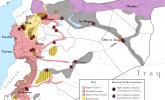


The Institute for the Study of War (ISW) and AEI's Critical Threats Project conducted a multi-week planning exercise to develop potential courses of action that the United States could pursue to destroy ISIS and al Qaeda in Iraq and Syria. The first two reports were released in January and media coverage is detailed below.
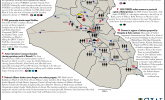
Iranian-backed Iraqi Shi’a militias spearheaded major operations to recapture desert terrain west of Samarra and Tikrit in Salah al-Din Province. The operation, announced and initiated by the Joint Operations Command on March 4, involves the Iraqi Security Forces (ISF) and Popular Mobilization, and aims to secure the Jazeera desert area northwest of Baghdad and prevent its use by ISIS as a support zone.

Syrian President Bashar al-Assad and his allies in Moscow and Tehran are continuing to complete the encirclement of Aleppo City despite an ostensible ‘cessation of hostilities’ that began on February 27, 2016. Russia resumed its air campaign against the opposition on February 28 following a one day hiatus, concentrating its strikes against the opposition-held northwestern suburbs of Aleppo City.
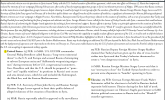
Russia redirected criticism over its operations in Syria toward Turkey with the U.S.-backed cessation of hostilities agreement, which came into effect on February 27. Russia has temporarily reduced the intensity of its air campaign following February 27, after weeks of heavily targeting opposition groups in Syria’s northwestern province of Aleppo.
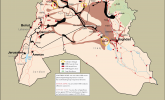
Since the publication of ISW’s last ISIS Sanctuary Map on January 16, 2016, ISIS lost a major resource hub in Shaddadi, northeastern Syria and was expelled from its remaining positions in Ramadi, western Iraq. ISIS responded by launching a campaign against Kurdish forces in Tel Abyad, northern Syria, and briefly seizing the city of Khanaser, southeast of Aleppo from Syrian regime forces.
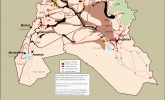
Since the publication of ISW’s last ISIS Sanctuary Map on January 16, 2016, ISIS lost a major resource hub in Shaddadi, northeastern Syria and was expelled from its remaining positions in Ramadi, western Iraq. ISIS responded by launching a campaign against Kurdish forces in Tel Abyad, northern Syria, and briefly seizing the city of Khanaser, southeast of Aleppo from Syrian regime forces.
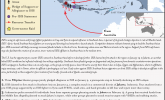
ISIS is using its safe haven and foreign fighter population in Iraq and Syria to expand influence in Southeast Asia, in pursuit of its grand strategic objective to rule all Muslim lands. ISIS’s Syria-based Southeast Asian fighters are resourcing and directing local networks to launch attacks.

The Iraqi Security Forces (ISF) launched operations to retake Ramadi from ISIS on December 22 and established control of the city on February 9. The ISF will need to target remaining ISIS safe havens in the Euphrates River Valley, including Hit and Fallujah, in order to consolidate these gains.